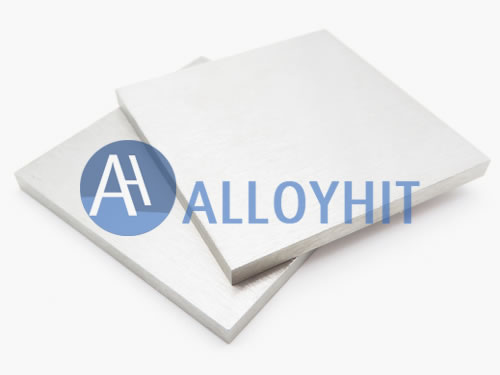
C103 Sheet/Foil
The plastic-brittle transition temperature of C103(Nb-10Hf-1Ti) alloy is lower than -196℃, the recrystallization temperature is 900~1300℃, and the stress relief annealing temperature is 900℃. General hot extrusion (1200~1250℃, extrusion ratio 4:1), hot forging (1200℃), warm rolling (600℃ pass deformation 5~35%), cold rolling (total processing rate 80~90%) can be used. %) and other technologies to roll various specifications of plates. Sheet processing performance, spinning performance is good.
Rolling requirements of C103 Sheet/Foil
Usually cold rolling is used, the total processing rate is controlled at 80%-90% of the slab thickness, and the pass processing rate is controlled at 6%-8% of the slab thickness. In order to ensure the surface quality of the plate, the forged slab blank is required to be free of defects, pollution, and the roller surface is smooth.
Forging requirements of C103 Sheet/Foil
Forging billeting is best to use press cold forging, the temperature rise of the forging should not exceed 400°C (the surface of the forging is blue at 400°C), and the uniformity of the material is good, which can reduce the pollution of gas impurities.
Cleaning requirements of C103 Sheet/Foil
Before annealing, the surface contamination layer must be removed by pickling. The pickling solution is configured with 65%-68% nitric acid, 9%-98% sulfuric acid and not less than 40% hydrofluoric acid in a volume ratio of 5:5:2, and rinse with water after pickling.
Heat treatment specification of C103 Sheet/Foil
In the vacuum state of 1×10^(-3)Pa, heat up to 800°C with the furnace, keep for 1 hour, C103 heat up to 1100-1600°C at no more than 20°C/min, keep the temperature for 2.5 hours, cut off and cool down It is baked at not more than 60°C.
Processing technology and heat treatment specification of C103 Sheet/Foil
Electron beam smelting niobium ingot-room temperature (or ≤400°C) forging billet-annealing-rough rolling-annealing-strip rolling-annealing-foil rolling-heat treatment.
Standard of C103
| Standard | Forms |
| ASTM B652 | Ingot |
| ASTM B654 | Foil, Sheet, Strip, Plate |
| ASTM B655 | Bar, Rod, Wire |
| AMS7852 | Sheet, Strip, Plate |
| AMS7857 | Bar, Rods |

 +86 13120915623
+86 13120915623